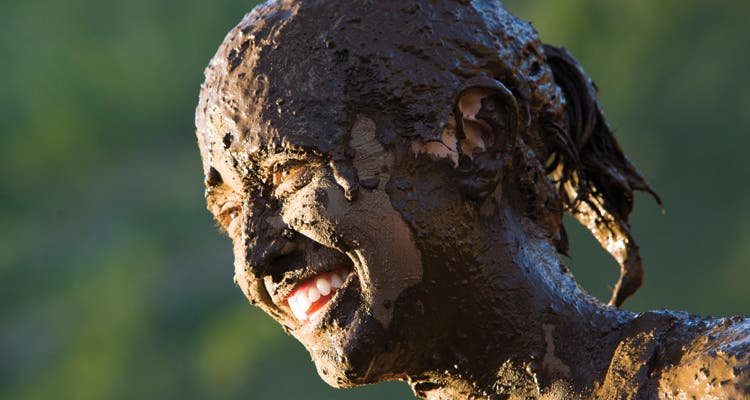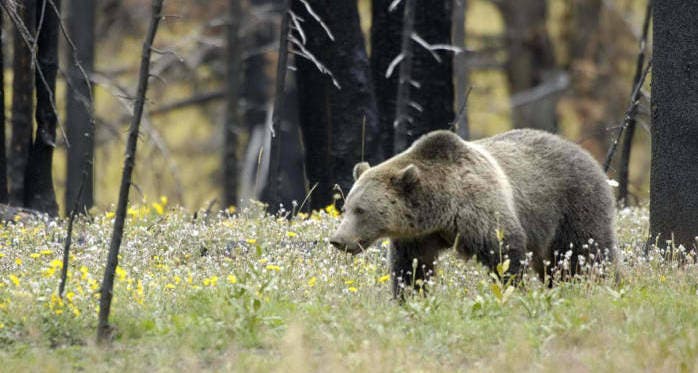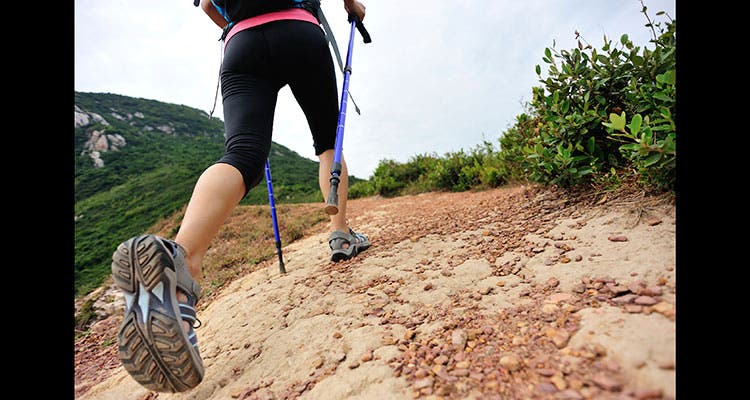6 Myths About Women Hikers No One Should Believe

'Case closed. Photo by Sergio Ballivian / Tandemstock.com'
MYTH 1: Women don’t like to get dirty.

Just. Plain. False.
MYTH 2: Women can’t carry as much.
In a 2014 paper, Kansas State University physics professor and Outward Bound instructor Michael O’Shea points out that strength does not increase proportionally to size. Think of tiny insects like rhinoceros beetles, which can carry 850 times their weight. According to O’Shea’s simplified, idealized model, a 110-pound hiker could carry up to 50 pounds, while a 240-pound hiker with identical body fat would be limited to 35 pounds. Clearly, real hiker loads don’t conform to a physics equation (and just because you could doesn’t mean you should; avoid carrying more than 30 percent of your body weight). But next time you’re divvying group gear, remember that a smaller person has less body mass to drag around, leaving more residual strength for fuel and tent poles. Tip: Keep reapportioning until everyone’s hiking pace is fairly equal.
MYTH 3: Menstruation attracts bears.

Repeated experiments, including one involving real women on their periods and another involving tampons dangled on fishing line, have shown that grizzlies and black bears tend to be as uninterested in sniffing feminine hygiene products as the rest of us are. Polar bears are the only species that showed any interest, but even they were five times as likely to lap up beer than to chew on a tampon.
MYTH 4: Crying means we want to turn around.

Modern psychology and our survey agree: Ladies cry more than guys do. But recent research suggests that’s likely more related to biological conditions than emotional weakness. Women have smaller tear ducts than men do, which means those ducts are more likely to overflow, making it harder for a woman to simply blink back tears. Women’s bodies also produce more of the hormone prolactin, which plays a role in lactation but also stimulates tear production—another reason women may cry more easily than men. Testosterone, on the other hand, helps raise the crying threshold. So, a woman may experience the same amount of frustration as a man in response to a challenge, but because of her biology, is more likely to express that frustration through tears. Does a bit of a cry mean we’re weak and want to turn around? Hell no.
Besides, crying can be beneficial. In a 2011 paper published in the Journal of Research in Personality, Dr. Lauren Bylsma concludes that criers feel better after letting loose a few sobs alone or around one other person. Crying in front of a group, though, tended to make the weeper feel worse.
If you need to postpone your breakdown, try slowing your breathing, which triggers a calming reaction in your body’s parasympathetic nervous system. Smiling or assuming a posture that makes you feel strong has also been proven to lighten mood. Tears already started? A 1999 study suggests that blinking stabilizes the tear film—that wet layer that exists naturally over the surface of your eye—and blinking more rapidly raises the spillover threshold.
What should you do if your backpacking partner starts to sniffle?
Calmly and gently inquire into the source of the upset. Responding with awkwardness only adds to the misery, making the despondent feel like an inconvenience. Likewise, telling stories about your own past triumphs over sorrow or providing unasked-for advice can have negative results. Instead listen, ask questions, and present options without telling the person what they should do.
MYTH #5: Women don’t play as hard.
Our survey found no significant gender difference in the length of people’s longest trips, and men and women were equally likely to have taken more than 10 backpacking trips in the past year. And according to the Outdoor Foundation2015 Backpacking Activity Report, women make up a higher proportion “core” backpackers than “all backpackers.”

MYTH 6: It’s riskier for women to hike and backpack alone than for men.

Many people fear that women hiking alone are particularly vulnerable to getting lost, hurt, assaulted, or raped in the wilderness. They’re wrong. For the full story on why women shouldn’t worry about hiking alone, see adventurer Kalen Thorien’s thoughts on why every woman should try backpacking by herself.